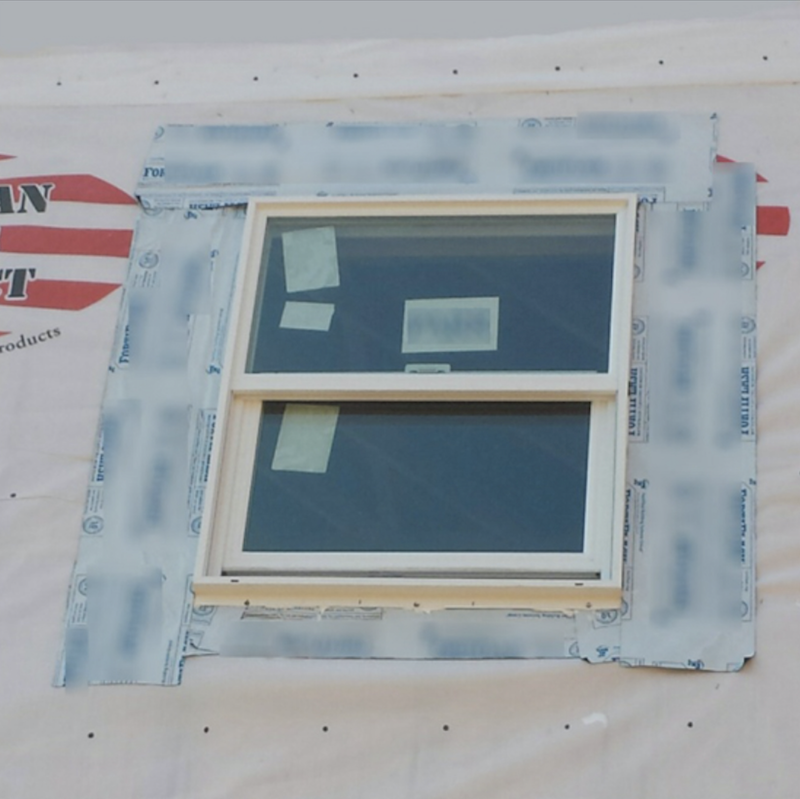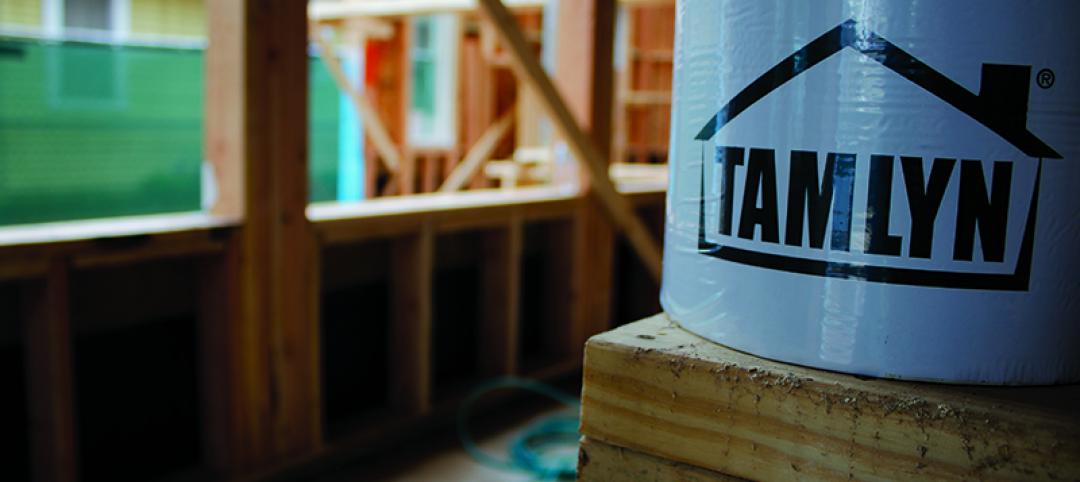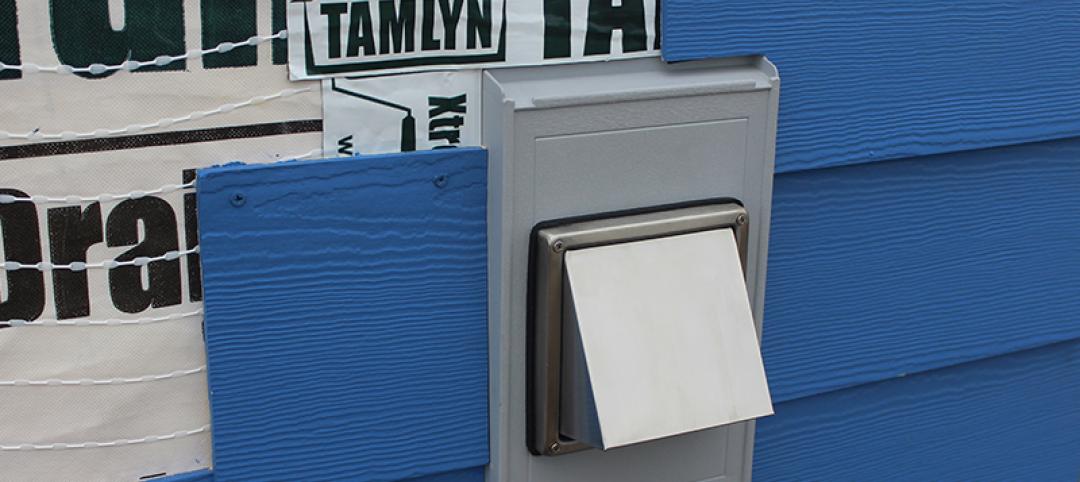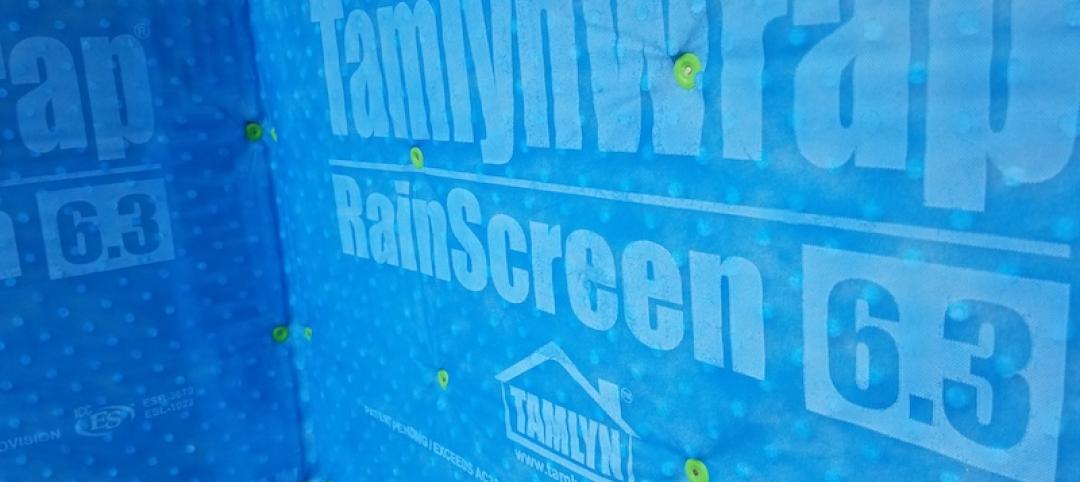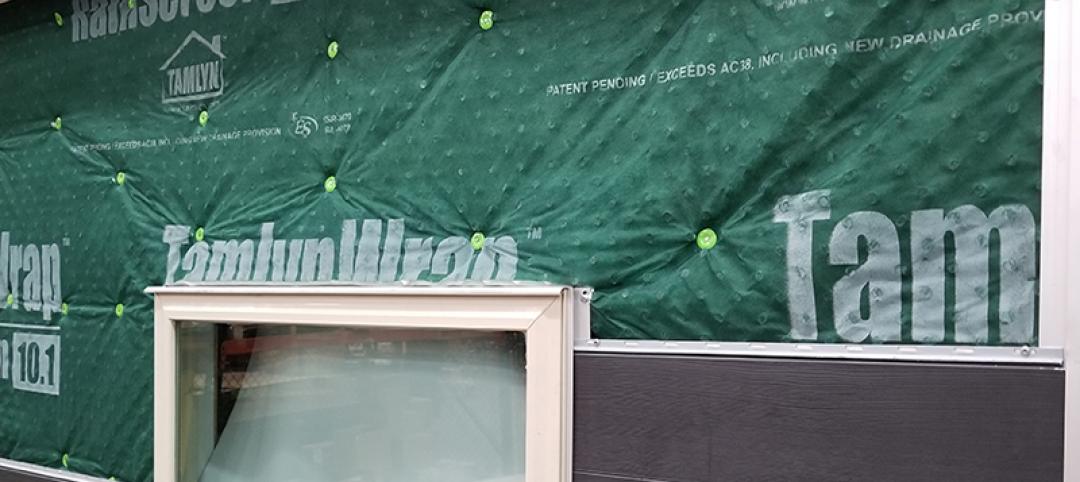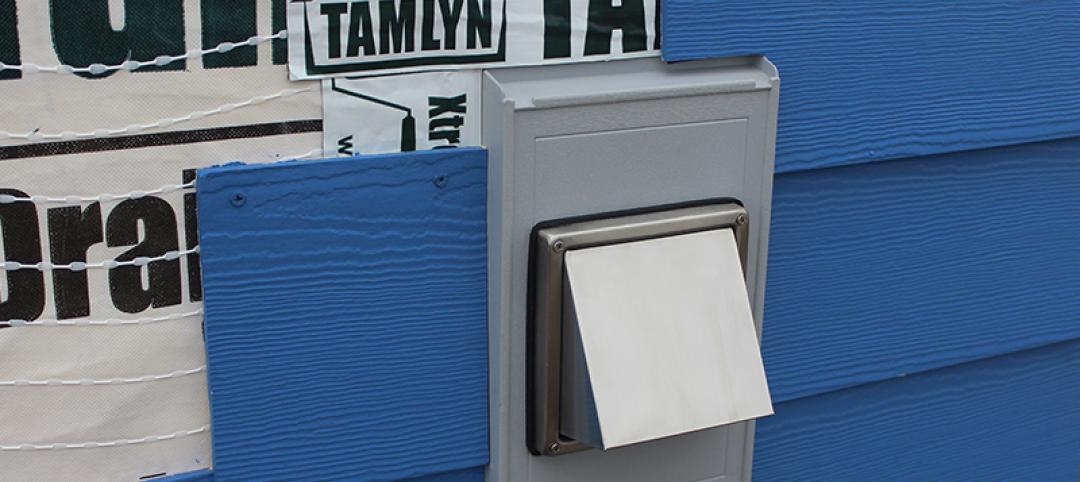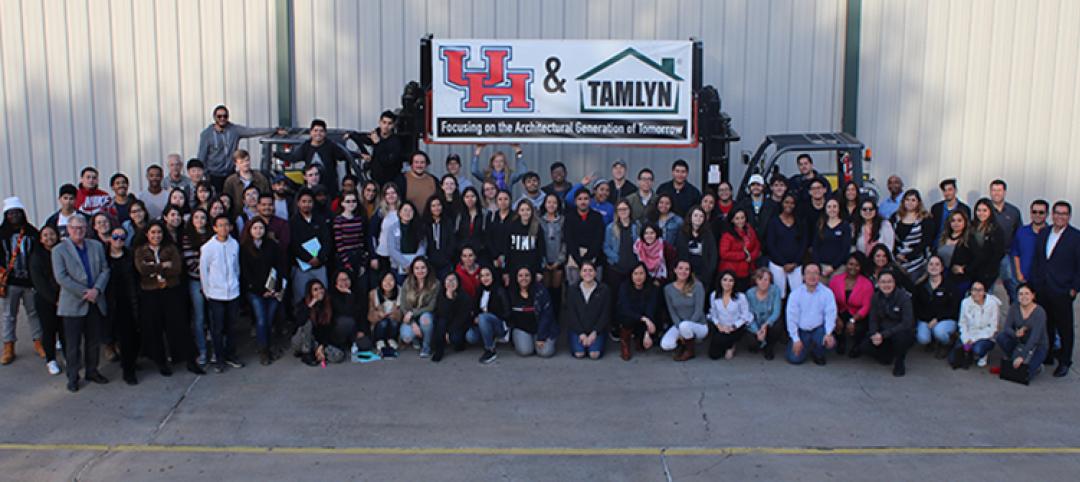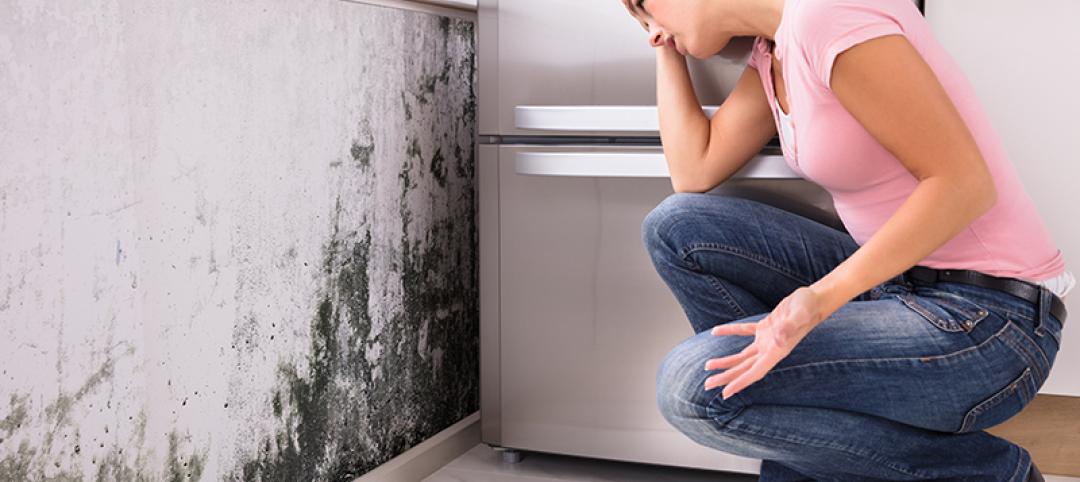Moisture may be builders’ worst enemy. It can lead to premature structural failure; shorten the life of exterior claddings and paints; foster mold, rot and insect infestation — not to mention costly litigation.
Even with the new focus on water management, one third to one half of all structures have damp conditions that may encourage development of pollutants such as molds, which can cause allergic reactions — including asthma, according to the Environmental Protection Agency.
Fortunately, a growing body of building products and systems, including drainable wraps, make it easier to properly manage moisture. As the name implies, drainable wraps incorporate both a water resistive layer and a drainage gap that helps water drain from behind the cladding at a faster rate. In fact the newest drainable wraps can be as much as 100 times more effective at removing bulk water from the wall than traditional wraps.
But unless these systems are properly installed, they will allow water in and may even encourage mold to grow. Here are three common mistakes to avoid when installing drainable wraps.
1. Improperly taped seams. As with all wraps, drainable wraps should be applied shingle fashion. Shingle lapping should begin at the base of the wall assembly with the housewrap a minimum of 2 inches over the sill plate. All horizontal seams should be overlapped by at least 4 inches to 6 inches, all vertical seams by at least 4 inches to 6 inches and corners by 12 inches. T
ape properly applied to the seams protects the integrity of the shingle lapping until cladding can be installed. But because drainable wraps contain gaps, it’s more difficult to get a tight seal. These taping gaps create catching spots for water and debris to nest in, which eventually causes the tape to fail and the wrap to unwrap.
The solution? Double-sided seam tape that’s applied on one part of the wrap with another course overlapping for a superior shingle lap fashion that prevents moisture — and meets code requirements.
2. Using the wrong kind of self-adhering flashing tape around windows. Properly installed windows should follow ASTM E2112, which offers a guide for how to wrap window openings and install flashing (see illustration).
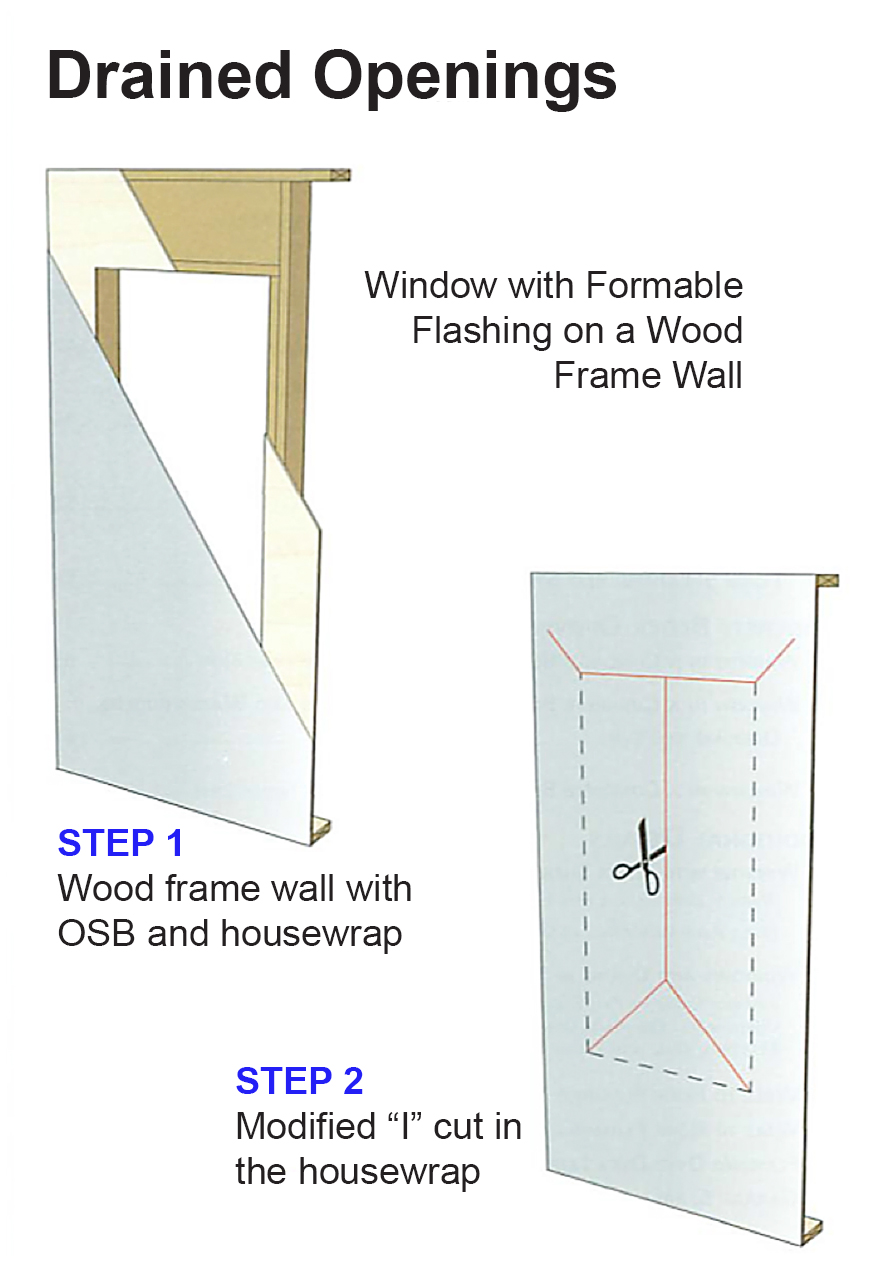
Using drainable wraps in combination with flashing adds even more insurance against water damage from this common failure point.
But because drainable wraps have a drainage plain that’s about 1.5 mm, they require a thicker self-adhering flashing tape. Choose a tape that is at least 20 to 25 mils thick to ensure the drainage plain is properly sealed.
3. Failing to add flashing at roof/wall intersections. Drainable wrap provides better protection against moisture than typical housewrap, but even the best wraps will fail at roof/wall intersections unless installed properly. Wherever roofs meet walls, kick-out and step flashing must first be installed before continuing the housewrap shingle fashion over the flashing pieces.
Otherwise, the roof/wall intersection creates a place where water will be pushed into the wall. This is a particularly insidious mistake because often the effects won’t be seen until it causes major structural damage.
For more on improving water management go to http://www.tamlyn.com.

More from Author
TAMLYN | Apr 8, 2020
Moisture-managing mounting blocks offer great margins – and meet growing needs of builders
Currently, when it comes to water management systems for openings such as vents and electrical, many builders simply tape around the opening and cover it with a makeshift treated piece of trim board.
TAMLYN | Jan 29, 2020
Choosing the Right Product to Avoid Water Damaged Walls
Walls using rainscreens go a long way towards a water-tight envelope
TAMLYN | Nov 7, 2019
Rainscreens for longer-lasting homes
Rainscreen walls go a long way towards a tighter envelope.
TAMLYN | Aug 21, 2019
Easy steps to avoid water damaged walls
Rainscreen walls go a long way towards a water-tight envelope.
TAMLYN | Jun 19, 2019
Will your vendor let you down? 4 vital questions to ask
To determine if your vendor has the right stuff to deliver what the crew needs at the right time and in good condition, here are four vital questions to ask.
TAMLYN | Mar 29, 2019
Moisture-managing mounting blocks offer great margins — and meet growing needs of builders
It’s important to educate — and upsell — builders on smaller detail pieces that have higher margins.
TAMLYN | Jan 18, 2019
Tamlyn and the University of Houston partner to educate the architects of tomorrow
Visits with working architects, builders and product manufacturers bring concepts to life and prepare architectural students for the first steps in their careers.
TAMLYN | Dec 17, 2018
Versatile trim creates modern look without blowing the budget
An off-the-shelf trim gives a mixed-used development a sleek, custom aesthetic.
TAMLYN | Dec 5, 2018
Ask these 5 crucial questions before choosing and installing drainable wraps
One third to one half of all structures have damp conditions that may encourage development of pollutants such as molds.

